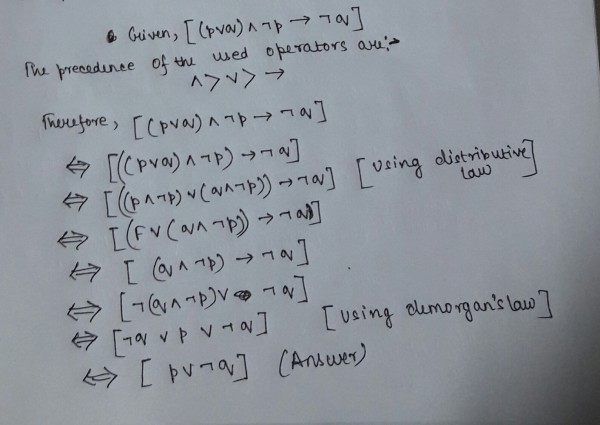Conjunctive Normal Form of a given well formed formulae (wff) is an equivalent wff consisting of product of elementary sum terms.
Principal Conjunctive Normal Form of a given wff is an equivalent wff consisting of product of sums where each sum term consists of all variables used in the formulae in negated or non-negated form.

Here, one question may arise:
HOW THE REDUCED WFF IS IN PRINCIPAL CNF FORM?
ANSWER:
In principal conjunctive normal form, every sum term must contain every variable, used in the given formulae, in negated or non-negated form.
PRINCIPAL CNF FORM ⟺ CANONICAL PRODUCT OF SUM FORM
Here in reduced formulae of the given question, there is only one sum term, which is: p∨⏋q
This sum term contains all variables used in the original wff ( p and q ) in negated or non-negated form i.e. p is in non-negated form and q is in negated form.
This satisfies the condition of principal conjunctive normal form and hence the reduced wff is in PRINCIPAL CONJUNCTIVE NORMAL FORM.
Thus, answer is OPTION 1.